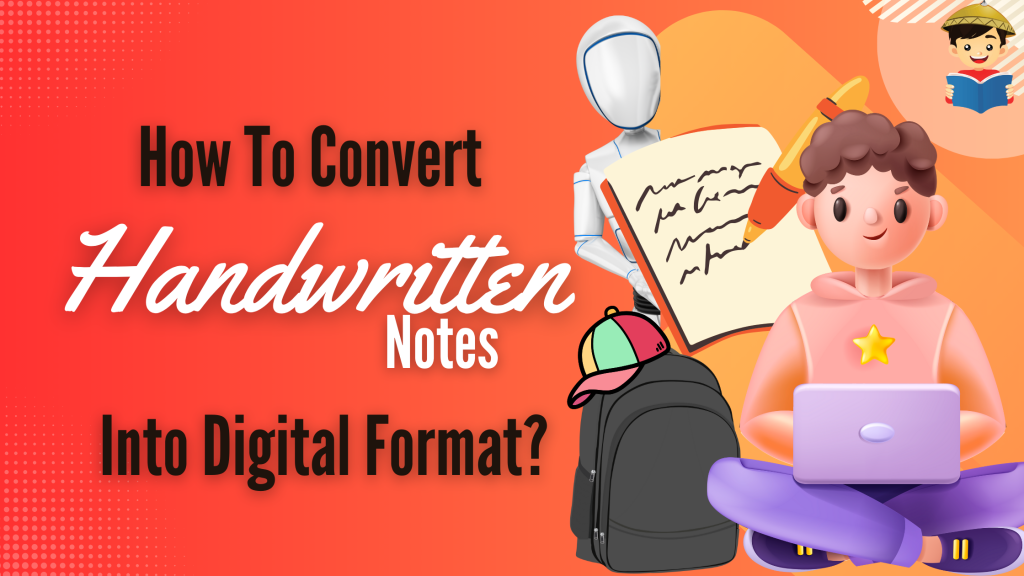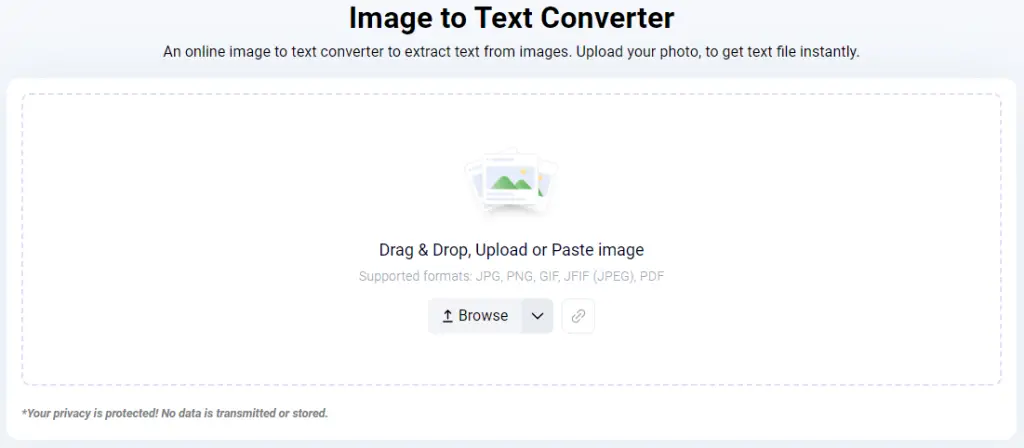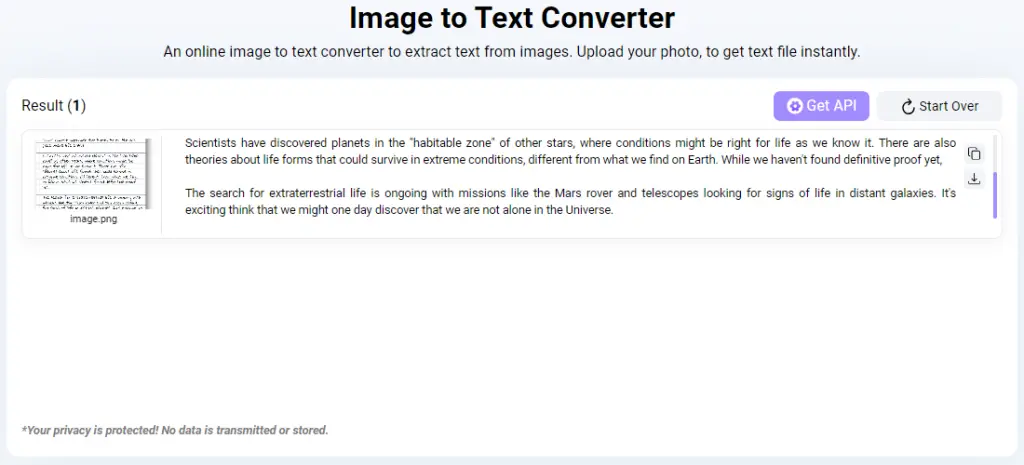How To Convert Handwritten Notes Into Digital Format?

It is no surprise that AI is becoming a huge contributor to the education sector. It allows students to learn beyond limits by automating repetitive tasks and providing customized learning solutions. However, many learners are still unaware of AI’s potential in education or don’t know how to use the tools to their advantage.
This article will help explore and teaches students to convert handwritten notes into digital format, enhancing productivity and academic performance.
In particular, we’ll show them how to digitize their handwritten notes to digital form using a popular OCR tool. Hence, students can easily send their assignments to their professors online and improve their productivity and grades.
Table of Contents
Process to Convert Image to Digital Text
Below, we’ve highlighted the entire process of converting handwritten notes (in image form) to editable form. Follow closely so that you don’t miss out on anything!
1. Capturing The Right Image
To start the process, you need the right image. By this, we mean to capture the photo with a decent amount of exposure to active or passive light. This will ensure that the text is clear in the image and unreadable for the image-to-text converter.
Secondly, ensure that the image has no horizontal or vertical tilts. Mostly, OCR tools are prepared to overcome this issue by auto-balancing photos for best results. However, better safe than sorry.
Our last recommendation is to have a reasonable file size for the image containing your handwritten notes. Most smartphones today have quite a robust camera that generates top-quality photos.
However, if your image is less than 50 KB, try changing the capturing device to get the best output from the conversion process. With all that being said, here’s a sample image taken from a student’s notebook.

2. Processing By AI Algorithms
The student’s handwritten note can be sent to their checker since we have its image transferred to our device. However, if the student chooses to make any last-minute changes to the image file, they can’t.
That’s why we need a solid OCR tool to make the text editable, updatable, and storable in digital form.
To make it a bit easier for you, we’ve created an Image-to-Text converter online. It works like a charm and does not incur costs, making it perfect for student use.

The said OCR tool is built upon advanced AI algorithms that analyze each character in the image. Then, it matches them with a built-in dictionary to recognize the written words, punctuation, etc., and presents them to the user for further application.
Let’s see the process in action to better understand it. For our work example, we’ll use the image shown in sub-section 1 of this article.
3. Converting To Editable Text
After coming to the tool’s main page, upload the image and start the process. There are multiple ways to do so:
- Drag & Drop / CTRL + V
- Upload from Device
- Upload through URL
You can upload the image using whichever method you prefer. For us, we copied the picture and pressed CTRL + V in the tool’s interface to upload the file to the converter.
Next, we clicked the ‘Convert’ button and waited for the CAPTCHA to roll. After that, we got the following result:

Sure enough, the Image-to-Text converter has functioned properly to make the text editable and usable on digital devices. Next, we’ll see how you can download this output for your benefit.
4. Downloading The Output
After the conversion process is completed successfully, you’ll see two buttons at the top-right corner. These are for copying and downloading the output, respectively.
The tool’s download file format is .txt, which preserves the file formatting (punctuation, etc.) for your convenience.
However, you can also manually select and copy the text to wherever you want, allowing you to utilize the text to your maximum capability.
Finally, our process of converting handwritten notes to digital form has been concluded. Next, we’ll learn about the benefits that the conversion process brings to academics and how AI is helping shape students’ futures.
Benefits of Digital Note-taking
Below, we’ve listed some benefits that you get from digital note-taking. Remember, this is only possible after you’ve completed the OCR steps mentioned above to make text accessible on modern devices.
1. Better Organization Of Information
Digital information is easier to carry, manage, and access. You don’t need to fill up your bags with course books, notes, etc. Simply digitize the documents to your device and carry them wherever you want.
Plus, remembering information becomes easier. You can make folders or sections with specific documents, allowing you to refer back to them when required.
The organization of information keeps the students’ workflow fluid, eliminating their triggers of procrastination. As a result, they become more active with learning, get top grades in their exams, and ace their careers.
2. Enhanced Collaboration
Students can easily share notes in digital form. This allows them to collaborate better on group projects and always stay one step ahead of others.
Besides that, they can integrate their work better with digital educational platforms like Google Classroom, Moodle, etc. This can give them an advantage over those who aren’t that tech-savvy to begin with.
The best benefit of staying digital is the ability to modify content instantly. Thus, collaborative efforts become instant successes, leading to a bright future.
3. Environment Friendliness
Last but not least, you don’t need to waste any paper when you transform from handwritten to digital notes. That’s right! No more frustrations of crumbling up a lousy draft and throwing it in the bin.
Simply press the backspace button on a keyboard or CTRL + Z to undo a move on a digital document. This will save you the huge hassle of making hard copies of notes and also be environmentally friendly.
No more paper wastage with digital note-taking on the rise. Get on to the new trend and surf the waves of excellence.
Final Words
AI is revolutionizing education by transforming handwritten notes into digital format, allowing students to automate tasks and access customized learning solutions.
This post guides students on using OCR tools to digitize notes efficiently, enhancing collaboration, organization, and environmental friendliness.
Converting handwritten notes to digital form allows students to easily share, modify, and access their notes, ultimately boosting their learning efficiency and academic success.
Embracing digital note-taking with the help of AI opens the door to a brighter future in academics.
Written by FilipiKnow
FilipiKnow
FilipiKnow strives to ensure each article published on this website is as accurate and reliable as possible. We invite you, our reader, to take part in our mission to provide free, high-quality information for every Juan. If you think this article needs improvement, or if you have suggestions on how we can better achieve our goals, let us know by sending a message to admin at filipiknow dot net
Copyright Notice
All materials contained on this site are protected by the Republic of the Philippines copyright law and may not be reproduced, distributed, transmitted, displayed, published, or broadcast without the prior written permission of filipiknow.net or in the case of third party materials, the owner of that content. You may not alter or remove any trademark, copyright, or other notice from copies of the content. Be warned that we have already reported and helped terminate several websites and YouTube channels for blatantly stealing our content. If you wish to use filipiknow.net content for commercial purposes, such as for content syndication, etc., please contact us at legal(at)filipiknow(dot)net